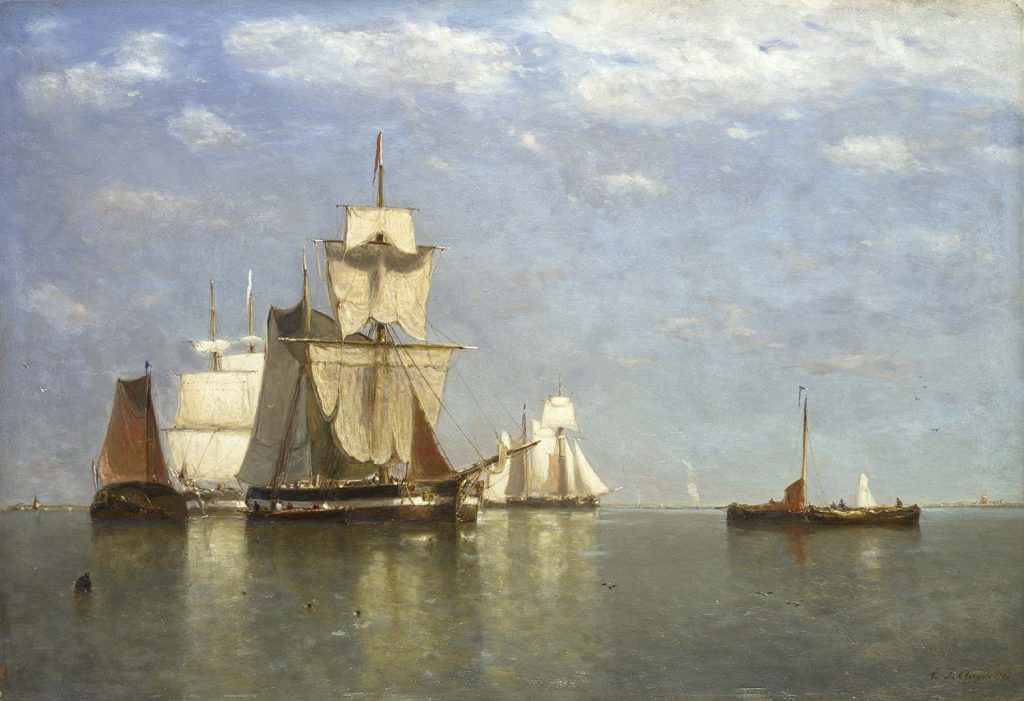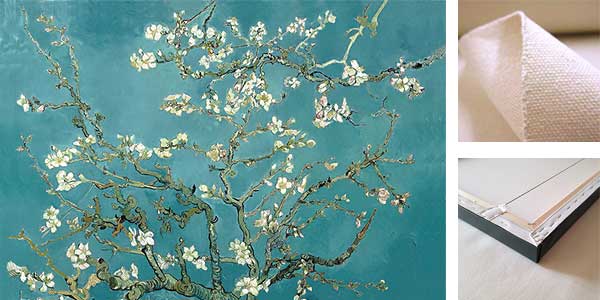
Ships Lying off Flushing by Paul Jean Clays was created in 1869. The painting is in National Gallery London. The size of the work is 59,9 x 86,8 cm and is made of oil on wood.
About the Work
Paul Jean Clays’ heavy working boats are motionless, their sails hanging like sculptured banners glowing in the sun. But their power is palpable, three great vessels ready to surge forward with the first breath of wind. Although the vessels are stately and we see the detail of rigging, the painting seems to be more about reflected light – the gleaming reflections that spread, shimmering, across the still water to the edge of the picture, almost under our feet.
The three central boats appear to be koffs, shallow-bottomed craft commonly in use in the nineteenth century on the coasts of Belgium and Germany. As they could sail close inshore, they were ideal for transporting goods and people. A small barge carrying passengers is coming in to the leading boat. Two others are moored nearby, one of them with the sail being raised.
The smaller boat on the left with the stubby mast and brown sail is a hay barge, a small vessel that would not venture far out into the North Sea. It carries the Dutch ensign; because of the lack of breeze to fill them out, it’s the only identifiable flag in the painting. But we can make out the tall chimneys of a distant factory in Flushing (in the Southwest Netherlands), its smoke spiralling upwards to join the quiet clouds above. Read more in National Gallery London
About the Artist
Paul Jean Clays (27 November 1819 – 10 February 1900) was a Belgian artist known for his marine paintings. In 1851 he made his debut at the Paris Salon and, while he tried to stay in the mainstream, his art was heralded by those who were looking for a change to more realism.
In 1852 he married Marie-Isaure (d. 1860), the daughter of the director of the Brussels Observatory, and moved to Antwerp where he lived from 1852 to 1856; it was during this period that his fortunes began to improve.
In 1856 he and his family moved to Brussels where he became a prolific artist, specializing in scenes along the Scheldt. He exhibited a number of works at the Exposition Universelelle of 1867 and the critic Burger-Thoré described him as one of the greatest marine painters of the time.
In 1868 he became a member of the Société Libre des Beaux-Arts, a society founded on 1 March 1868 to help promote the works of artists who were interested in their individual interpretations of nature. He was a frequent exhibitor at the many exhibition halls in Europe and exhibited many pieces at the Paris Salon. Read more in Wikipedia
Order a reproduction of this work (printed on canvas)
